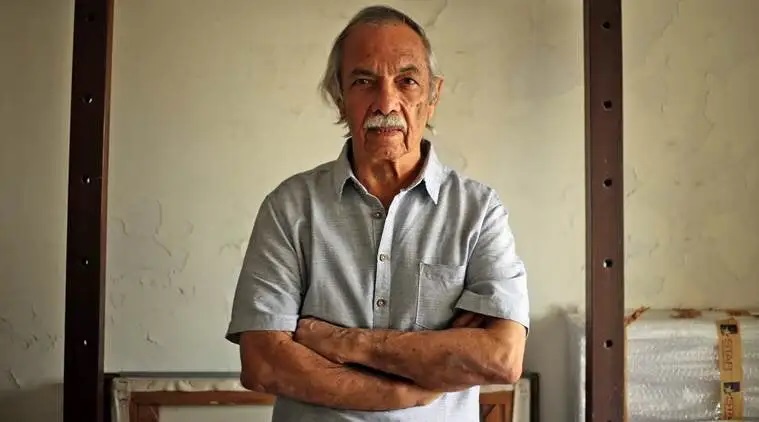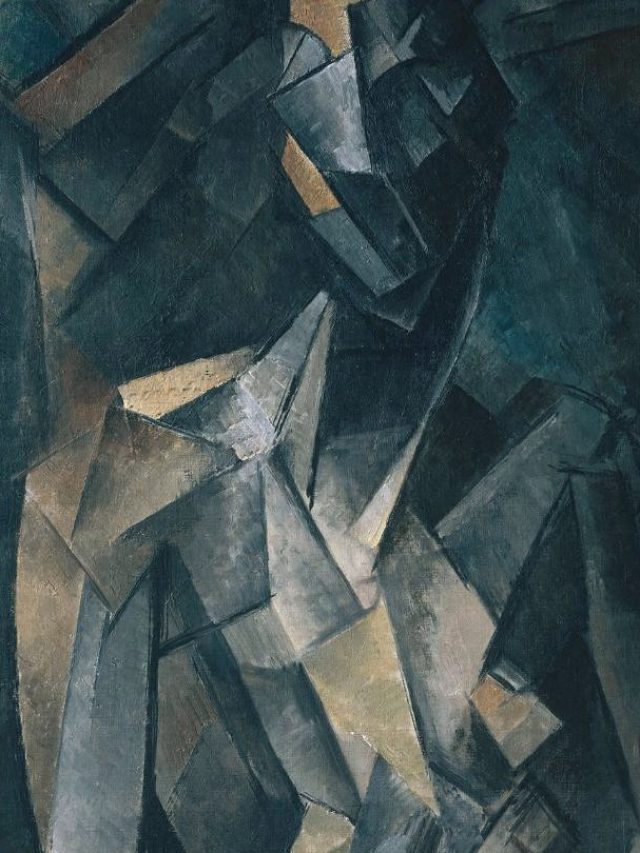In an interview with the poet Arundhati Subramanium, the artist Gieve Patel talked about a phrase from Wassily Kandinsky’s book ‘Concerning the Spiritual in Art’ that has informed his artistic practice as a painter and a writer. Kandinsky’s mandate suggests, “Write when you feel an inner need or don’t.” Born on 18th August 1940, Gieve Patel is a renowned Indian painter and an essential figure in Indian literature. However, just like his fellow artist and dear friend Sudhir Patwardhan, Patel practised as a physician alongside his artistic pursuits until his retirement in 2005. On his birthday today, let us turn to his enigmatic painterly career.
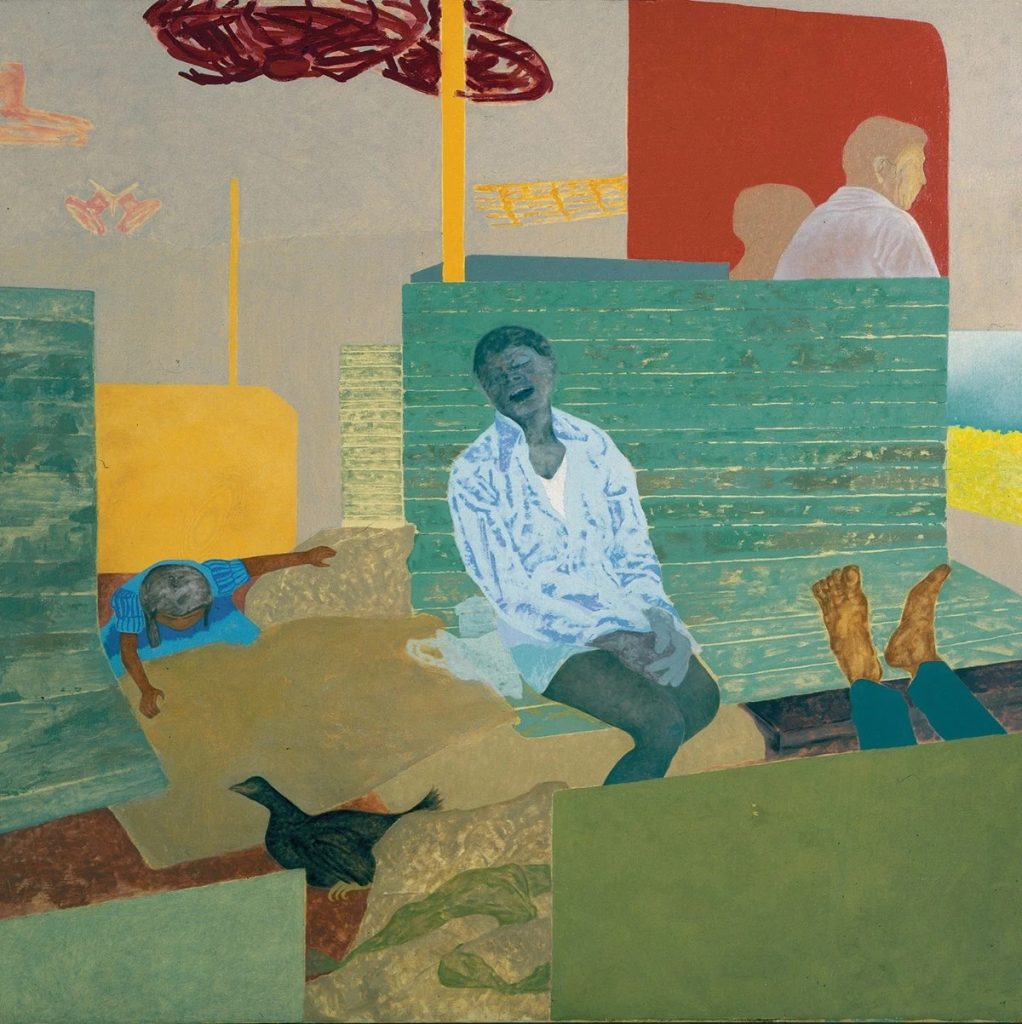
Educated at St. Xavier’s High School and Grant Medical College, Mumbai as a doctor, Patel never had formal training as an artist. During his late teens, he was gifted a book that included classical paintings by European artists. He says that those paintings prompted him to copy them with pencil and watercolour, eventually sparking an interest in the form, which made him undergo rigorous self-training. During these formative years, he began by copying the style and subjects of the then-leading artists of India like Akbar Padamsee, Tyeb Mehta, F. N. Souza, etc. Padamsee was also an influential mentor for Patel in those years, offering the young artist generous encouragement and critical comments on his works. These comments from Padamsee and interactions with the poet Nissim Ezekiel were instrumental in pushing Gieve to forge his style and subjects.
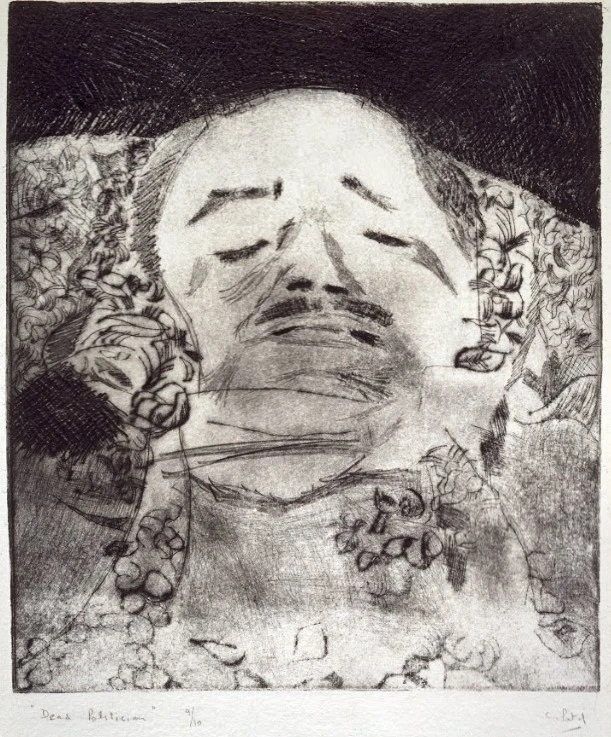
In an interview, he mentioned that three subjects have preoccupied him through all these years. Firstly, the human being in a setting, usually an urban environment, concerning open public space, for instance, streets or railway stations, resulting in his Railway Platform series. Interiors, he remarks, hardly interest him. For Gieve, the artist only needs to look around and observe the stories and subjects always available in our local everyday surroundings. This is how he chanced upon the subject of his first series of paintings, Politician, which got him public attention. Done in the 1960s and 70s, the paintings were influenced by photographs of politicians being garlanded and felicitated that Patel repeatedly came across in newspapers. In The Dead Politician (1972), Patel presents a caricatured portrait of a dead politician being garlanded.
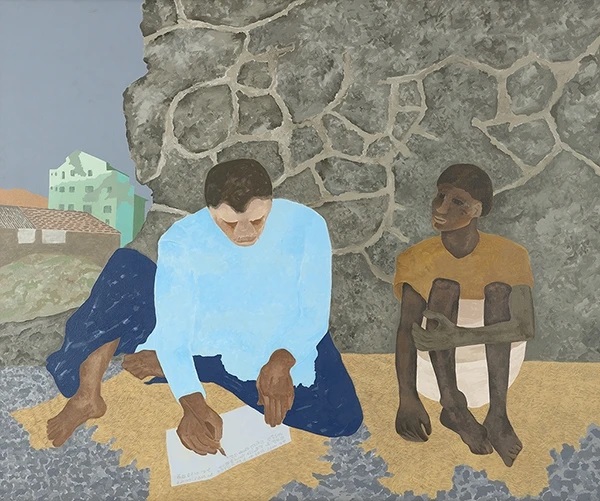
The city of Bombay, where Patel has spent most of his life, presents him with enigmatic encounters and sites now and then. One such activity that he witnessed was that of letter writing, wherein uneducated people hire professional letter writers to write for them. What interested Patel about the activity was its peculiar power dynamics: despite the power of money, the employer seems to be secondary to the employee – the writer. His captivating painting The Letter Home (2002) tries to capture this predicament with the writer and the labourer occupying the canvas. With his literacy and knowledge, the former seems to be overpowering the other with his confident, relaxed pose and larger bodily frame. At the same time, the latter looks timid and sits with his feet close together.
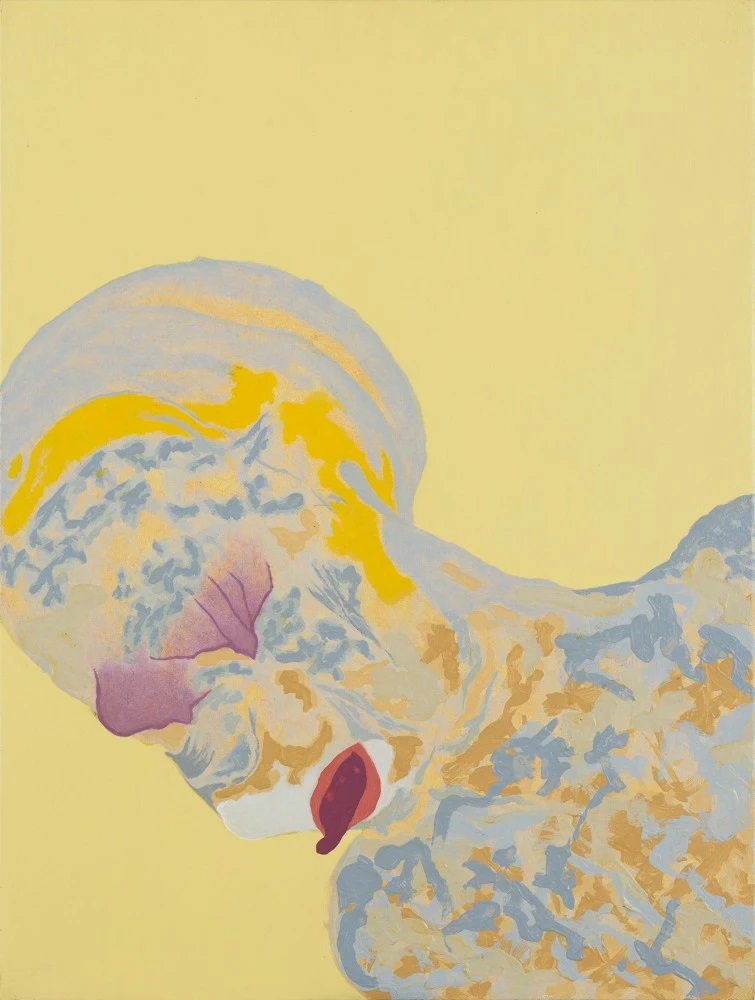
Death and decay are the other themes that have intrigued him in his painterly and poetic endeavours. Invoking the Mahabharata in an interview, he said, “Amongst the many questions asked to Yudhishtir by the spirit of the lake is this, ‘What is the strangest thing in the world?’ And his reply is, ‘the strangest thing in the world is that human beings see death every day and yet think that it does not apply to them’.” Meditations on Old Age II (2013) is one of the many paintings dealing with old age and sickness that Patel exhibited in his 2017 exhibition Footboard Rider. The figure in this work is indiscernible to an almost inhuman degree. The disfigured skin, along with the drooping eyelids, suggestive of old age, along with Patel’s choice of colour, is a disgusting site for the viewer conveying the decrepitude and decay that comes with old age.
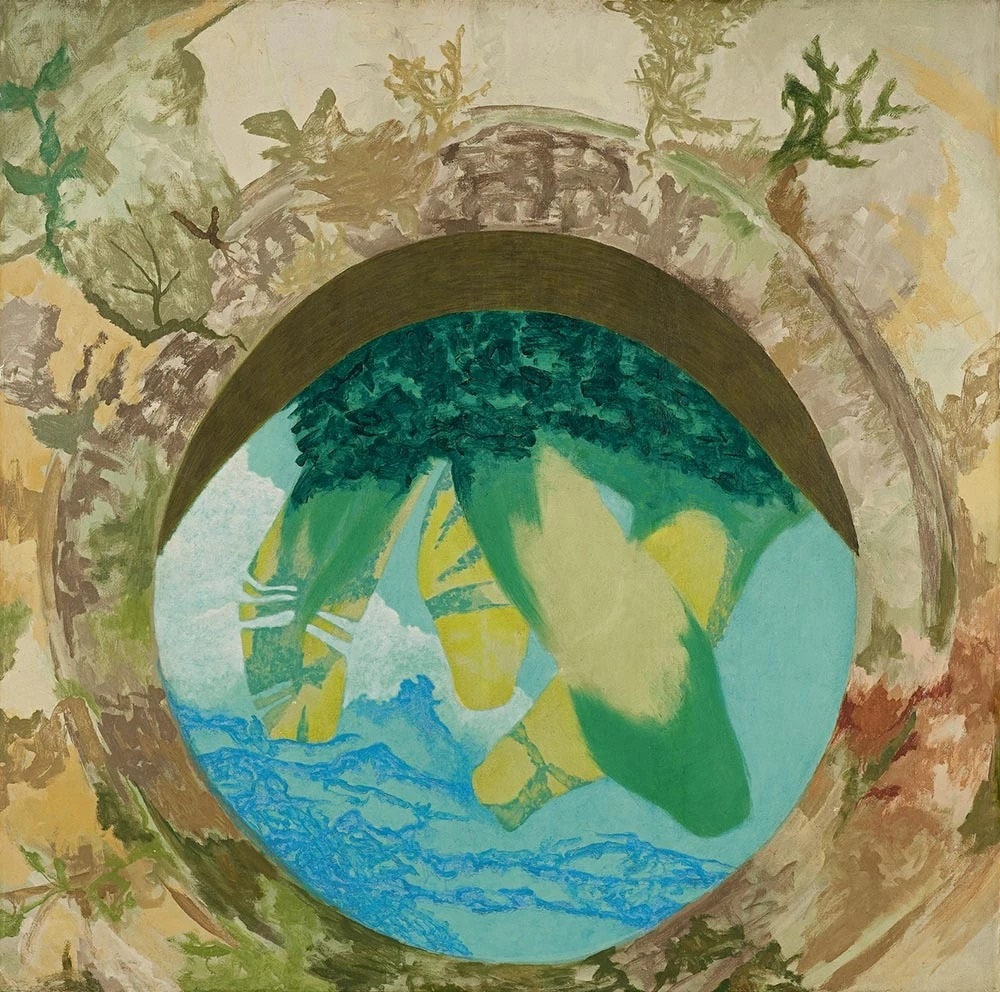
Finally, in 1991, Patel turned to his third artistic subject: his boyhood love for the wells he encountered in his native village of Nargol in Gujarat. These are not like the renowned huge step wells of Gujarat but humble little village wells that fill to the brim during monsoon so that one can touch the water by leaning over the well. For Patel, this experience of looking into the well had always been a special one. But “How to translate that visual moment onto a two-dimensional canvas?” was his predicament since, in reality, one looks perpendicularly down into a well, whereas, on canvas, it is straight in front of us. His experimentation resulted in exquisite paintings reflecting an abstractionist bent to them. The title of the painting above tells us that we are looking down at the mirrored details of the landscape (banana fronds) and sky. But interestingly, we could just as quickly be deep inside the well, looking up at the world through its water. This ambiguity, along with the vibrant colours, immerses the viewer, making it a fascinating experience while obliterating that usual vertiginous experience of looking into a well.
Nevertheless, Patel’s oeuvre does not exhaust itself within these three thematic demarcations. And hence, any justice to his eclectic oeuvre and even greater eclectic personality is impossible to render within the scope of this article. However, to conclude, we must learn from Patel this very quality of eclecticism: that when life in all its mystery throws questions at us, we must respond to them with everything we have, whether it be a brush stroke or a poem.
References
Of Poetry, Paintings and Gieve Patel: Click Here
Art in review gieve patel and sudhir patwardhan: Click Here
Gieve Patel: Click Here
Looking Well Staring Clouds Gieve Patel: Click Here
Footboard Rider: Of Life and Death in Gieve Patel’s Art: Click Here
Gieve Patel: Click Here
GIEVE PATEL INTERVIEW by Parul: Chandigarh Lalit Kala Akademi: Click Here
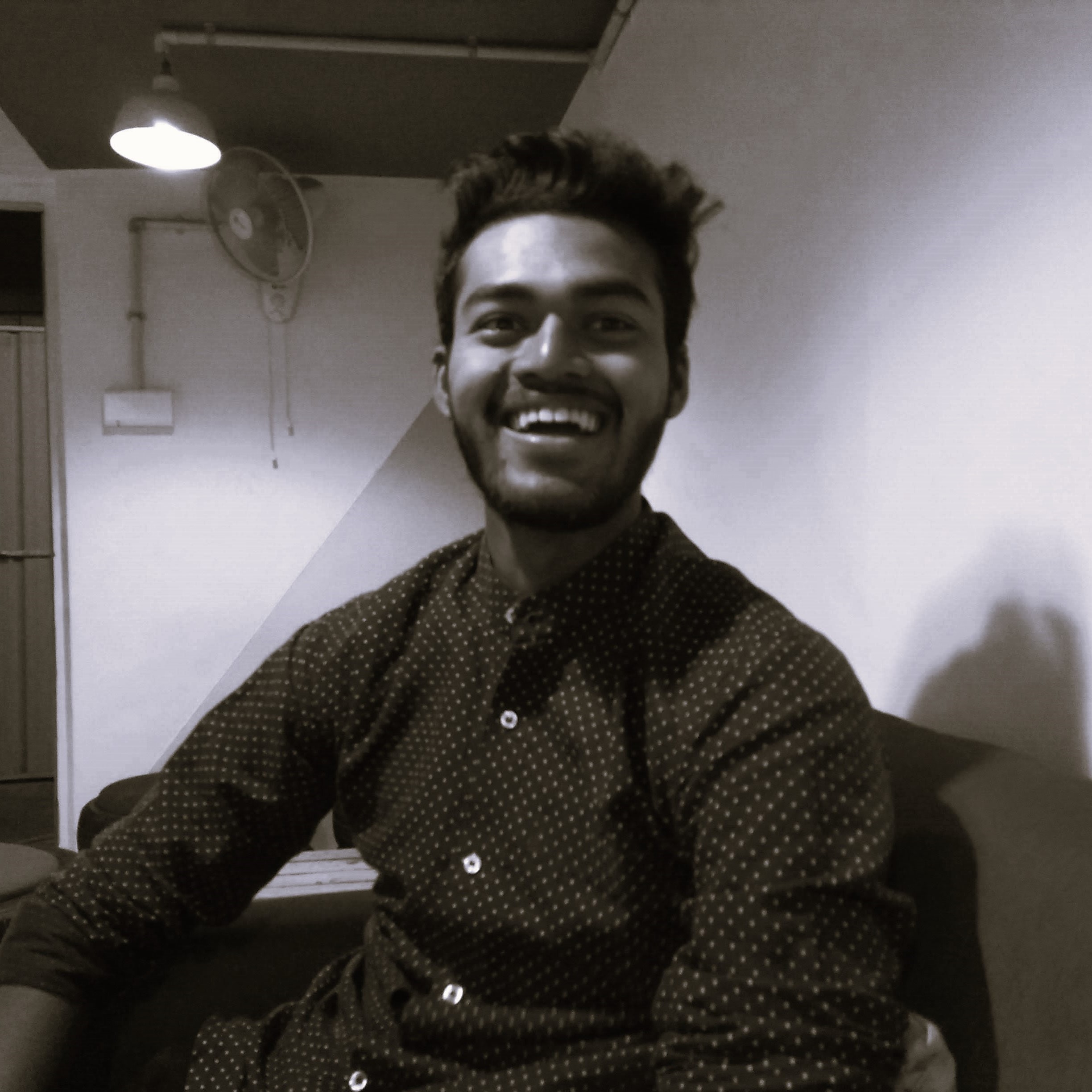
Contributor

